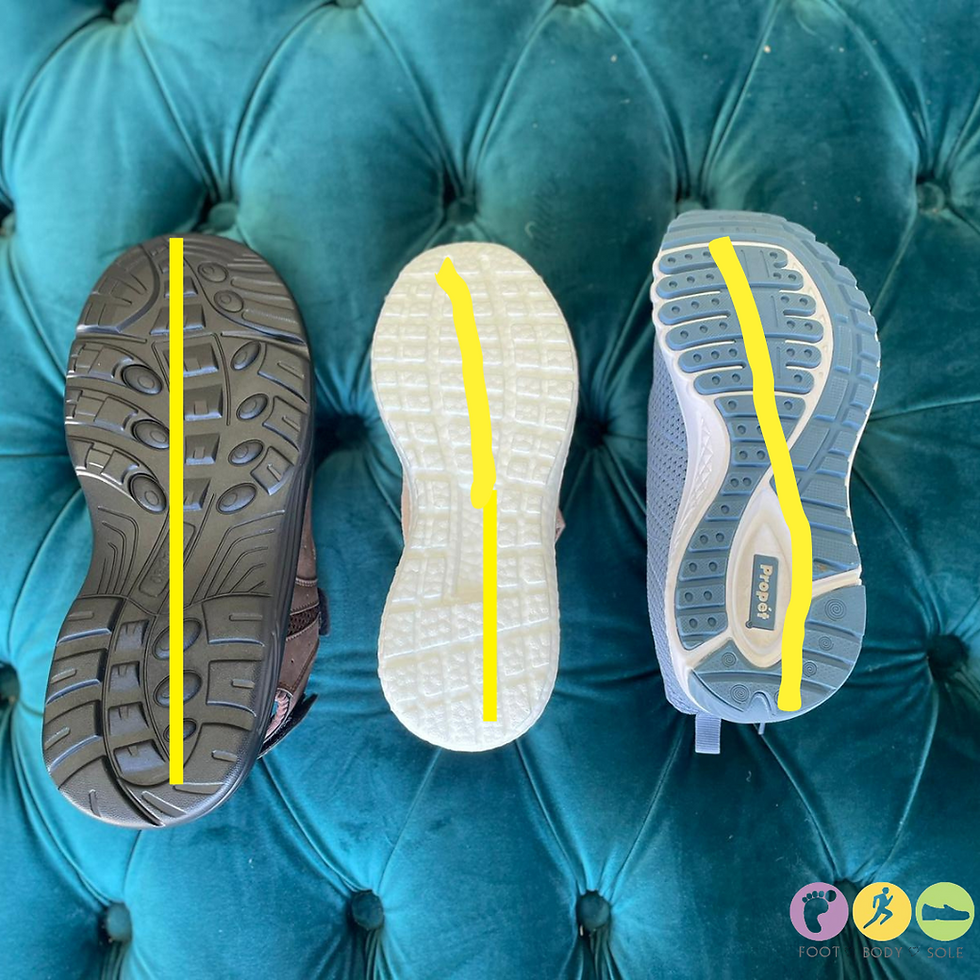if the shoe fits...
- Foot Body Sole
- Oct 22, 2018
- 2 min read
Updated: Jun 4, 2021
As a podiatrist, I get asked all the time "what's the best shoe to buy". Rather than recommending a specific brand or type of footwear, I always refer patients to look for good features in the shoes. That way, next time you go shopping, you can make a more educated decision and not end up with an expensive shoe that hurts you after an hour of wearing them.
The following are some good features and tips to stick to when you look for a good supportive footwear.
1. Length - Allows approximately one thumb's width between the end of the longest toe and the end of the shoe. You may also have one foot that is a bit bigger than the other. Always accommodate for the larger foot, you can put a forefoot insert in the shoe of the smaller foot if need to.

2. Toe Box - Ensure sufficient depth and width in the toe box to allow toes to wriggle easily. Some digital corns and clawing toes are caused by narrow and shallow toe boxes. If the tops of the toes are rubbing at the front of the shoe, then chances are the toe box is not deep enough.

3. Firm Heel Counter - The heel counter or back of the shoe should be strong enough to provide stability and support. If you push the back ends of your shoes, the back end should stay firm and not collapse with the strength of your thumb.

4. Sole - The sole should flex or bend across the ball of the foot, where the toes start, not in the middle. Your foot naturally bends at the balls of the foot, just behind your toes. Having a shoe that bends with your feet is more comfortable and help to activate the muscles in your foot.


5. Last - Look for a straight or semi-curved last, rather than a curved last for walking.
HINT: use a ruler or similar to bisect the heel. If the majority of the forefoot is on one side, the last is probably too curved for a walking shoe.
6. Fastenings - Laces, buckles, or velcro straps across the middle of the foot will ensure a good fit and help prevent foot fatigue. By securing your feet, it prevents the toes from jamming into the front of the shoes, also gives your feet more support and decrease the likelihood of your toes clawing to hold onto a shoe.
7. Upper and Lining - Leather is more flexible than synthetic. (Running shoes are designed differently and may well contain little leather). Check for seams or ridges that might irritate.
8. Hosiery - Check socks or stockings for seams or ridges that might irritate. Wearing socks in shoes help to absorb sweat and hot feet.
If you are still unsure of what to look for to help your aching feet, please book in for a complimentary footwear fitting with one of our podiatrist today or you can walk in anytime as all our retail staff are either Podiatry students or very well trained to fit you.
CLICK HERE TO BOOK
http://www.footbodysole.com.au/book-online









Nina is very kind and helpful.Will go that extra step for her patients!
Great advice, thanks for sharing!